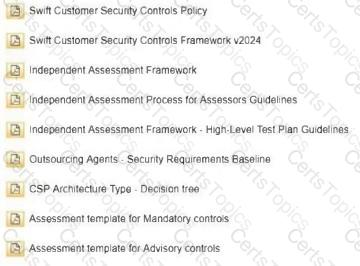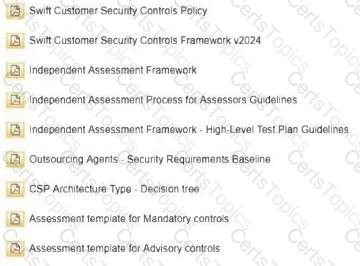Verified By IT Certified Experts
CertsTopics.com Certified Safe Files
Up-To-Date Exam Study Material
99.5% High Success Pass Rate
100% Accurate Answers
Instant Downloads
Exam Questions And Answers PDF
Try Demo Before You Buy






The SWIFT user has installed its own Communication Interface on a dedicated virtual machine offered by a public cloud provider. Under which provider category does the public cloud provider fit, and what is the CSP impact? (Select the correct answer)
•Swift Customer Security Controls Policy
•Swift Customer Security Controls Framework v2025
•Independent Assessment Framework
•Independent Assessment Process for Assessors Guidelines
•Independent Assessment Framework - High-Level Test Plan Guidelines
•Outsourcing Agents - Security Requirements Baseline v2025
•CSP Architecture Type - Decision tree
•CSP_controls_matrix_and_high_test_plan_2025
•Assessment template for Mandatory controls
•Assessment template for Advisory controls
Which of the following infrastructures has the smallest Swift footprint?

What type of control effectiveness needs to be validated for an independent assessment?
